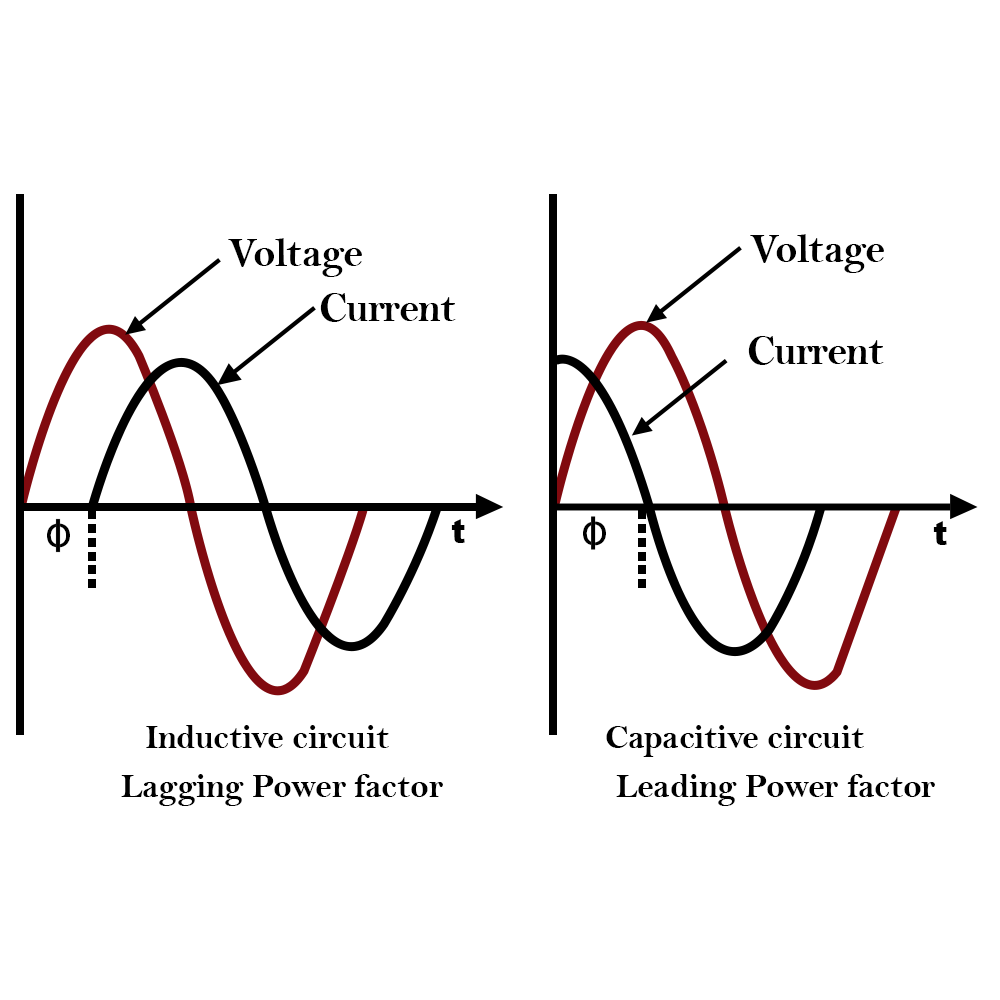The growing worldwide demand for electrical energy and problems of limited energy resources due to the drastic depletion of fossil fuels is a big reason to worry about in the present situation. Due to these limited energy resources, it’s become difficult to manage the storage of electrical energy on a large scale and monitor its usage in terms of maintaining the technical parameters equivalent to their standard/ideal range.
In the following blog, we will be learning about the most important parameter of electric energy and utility, which is the “POWER FACTOR” and the methods of maintaining the power factor. In simple words, it can be defined as “The cosine of the angle between voltage and current flowing in an electrical AC circuit”.
What is ‘Power Factor’?
It is defined as the phase difference between voltage and current, indicating the amount of power put into use and the amount of power wasted. To maximize the amount of power to be fed to the electrical equipment, the maintenance of the shape of the current waveform is an important task.
What is Power Factor Correction?
The task of maintaining the shape of the input current waveform in order to maximize the real/active power is known as power factor correction.
What causes the need for Power Factor correction?
Generally, the PF varies depending upon the energy-consuming/storing loads such as capacitive and inductive.
In capacitive load, the current leads the voltage by 90 degrees. Whereas, in inductive load, the current lags behind the voltage by 90 deg.
Ideally power factor needs to be maintained at “Unity”. But in actual conditions, the permissible range of PF is between 0.97 to 0.99. If the PF is below the lower permissible range and greater than unity then consumers are penalized for not maintaining the same. Thus maintaining PF near to unity or in permissible range is very important and maintaining PF yields various benefits such as follows;
- Reduction in penalties leading to ultimate savings on electricity bills.
- Reduction in switchgear sizes and respective pricing.
- Reduction in power system losses.
- Reduction in unbalance of supply and demand.
How can the Power Factor be corrected?
A UPS with a poor power factor can lead to increased losses, reduced system capacity, and potential overloading of electrical components. To achieve the above benefits various methods are available. Power factor correction in UPS involves the use of power factor correction capacitors or active power factor correction circuits. These components work to offset the effects of inductive loads and align the current waveform with the voltage waveform, thus improving the power factor.
But the major concern of maintaining the “Good Power Factor” is on the consumption side. One of the most reliable solutions applicable on a large scale is Uninterruptible Power Supply (UPS).
Various brands, makes and models are available in the market. Which one to choose? What capacity? The answer to these queries is based on types of functional loads, and the supply and demand of electricity for those loads.
Very few brands match up with the requirements, out of which one of the brands is Delta.
With its expertise and experience in power management and energy efficiency, the Mission Critical Infrastructure Solutions (MCIS) business of Delta Electronics Inc. positions itself as: “The power behind competitiveness”. MCIS plays an important role in making our customers’ businesses more competitive. MPower in association with Delta Electronics, fulfills this role by providing highly reliable and efficient power management products and data center infrastructure solutions to ensure the continuity of our customers’ mission-critical operations while reducing their Total Cost of Ownership (TCO). Delta MCIS is a powerful and trustworthy partner to companies that strive to outperform the competition.
One of the key features of the Delta Online UPS is that the power factor is maintained at unity for all Online UPS, UPS for Home, UPS for Office Use, etc. Delta has a wide portfolio of line-interactive UPS ranging from 600 VA UPS to 1 kVA UPS. The Online UPS range starts from 1 kVA UPS in the Amplon Family to Delta’s superior Ultron DPS series 300 – 1200kVA UPS and other models.
In conclusion, understanding and implementing power factor correction in UPS systems is crucial for maintaining energy efficiency, reducing operational costs, and ensuring the reliable operation of connected equipment. As technology continues to advance, the integration of power factor correction mechanisms will become increasingly important in the design and deployment of UPS systems, ensuring a more sustainable and efficient use of electrical power.




